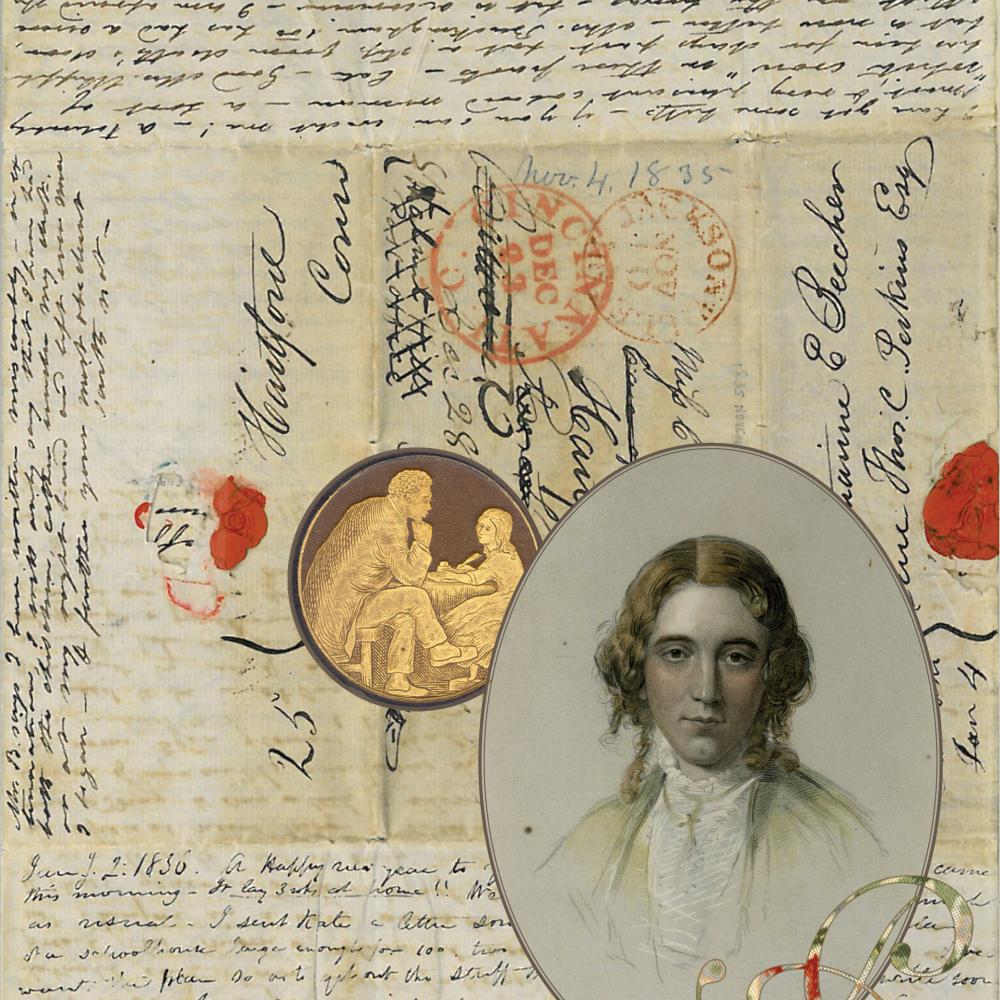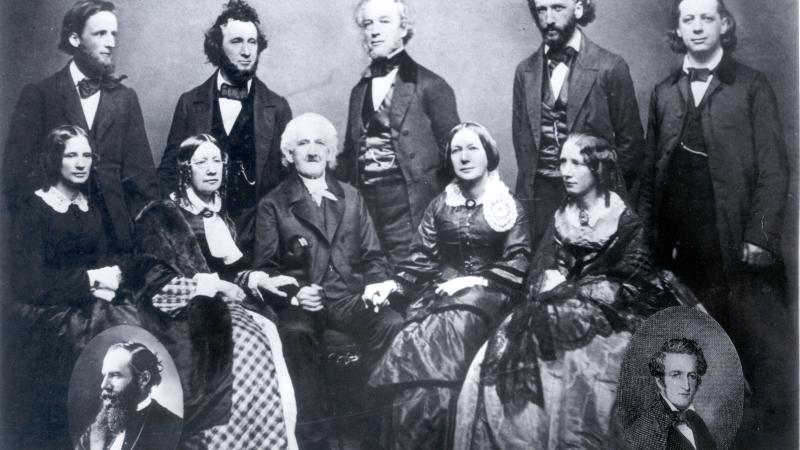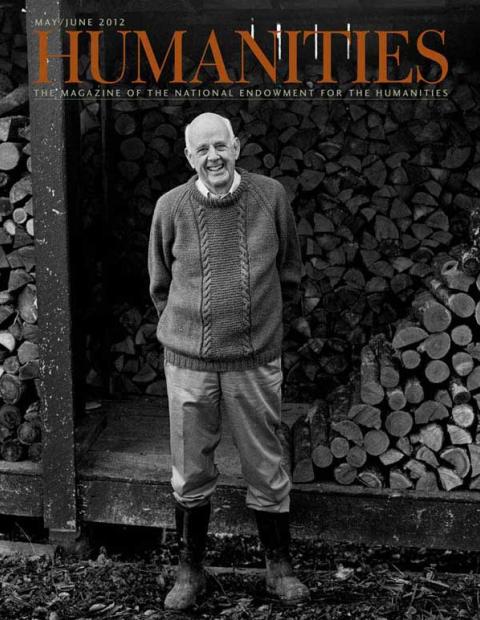She was a famous activist in her day, arguably the most famous in the world, but do Harriet Beecher Stowe’s causes still retain any relevance for a twenty-first-century America?
Katherine Kane, executive director of the Harriet Beecher Stowe Center in Hartford, Connecticut, has no doubts. As she escorts me through Stowe’s home, a 4,500-square-foot Victorian “cottage,” Kane points out that the issue at the heart of Stowe’s blockbuster novel, Uncle Tom’s Cabin, is far more than a historical footnote. Though the United States legally abolished slavery in 1863, tens of thousands of men, women, and children remain effectively the property of exploiters in the sex industry, as well as in agriculture and domestic service. “An individual,” notes Kane, “is worth less money on the slave market [today] than has ever been the case.” Education and literacy, causes Stowe promoted as a young teacher in her older sister’s female seminary in Hartford and later as a sponsor of an integrated school in post-Civil War Florida, remain out of reach for many impoverished children across the nation. The status and legal rights of women, also passionate concerns for Stowe, are still very much on the national agenda—and on the agenda of the Harriet Beecher Stowe Center.
Given the complexity of Stowe’s legacy, it should be no surprise that the center itself is a unique hybrid. The core is the museum housed in Stowe’s former home at 77 Forest Street, in a community formerly known as Nook Farm. In 1853, a year after the first book publication of Uncle Tom’s Cabin, Stowe’s brother-in-law John Hooker and his brother-in-law, Francis Gillette, acquired 140 acres of pasture and meadow on what were then the western outskirts of Hartford. After building themselves houses on this property, they made parcels available to other like-minded individuals, and over the next few decades, Nook Farm developed into a collection of large homes scattered across an expansive, park-like landscape.
This unconventional setting attracted an equally exceptional group of residents. Hooker’s wife, Isabella, a founder of the women’s suffrage movement in the United States, was Harriet Beecher Stowe’s sister, and Nook Farm soon became a gathering place for the extended family. Another sister, Mary Beecher Perkins, and her husband built a house at Nook Farm in 1855; Harriet Beecher Stowe and her husband, Calvin, built a mansion nearby in 1865 and downsized to a smaller house on Nook Farm proper in 1873, living there until she died in 1896. For a while, a cousin, who would become a leading advocate for equal rights for Native Americans, rented a house in Nook Farm as well.
Other residents included leading abolitionists (Francis Gillette’s earlier house was a station on the Underground Railroad), spiritualists, journalists and, most famously, author Samuel Clemens (Mark Twain). Though today Clemens’s literary reputation overshadows that of Stowe’s, it’s worth noting that one of the attractions of moving to Hartford for the up-and-coming writer from Missouri was that he could live next door to the woman who was the most famous author in the United States, an international figure whose sales at home and abroad numbered in the hundreds of thousands. It was in his Nook Farm house that Twain wrote not only Tom Sawyer and Adventures of Huckleberry Finn, but also coauthored The Gilded Age with Nook Farm neighbor Charles Dudley Warner. This last novel, a satire which has given its name to the era, was the result of a dinner party bet. In response to disparagement by Clemens and Warner of the novels their wives were reading (feminine literature was poorly regarded by male critics of the time), the two women challenged the two men to write something better. Despite the coauthors’ harsh words, the result of their collaboration never achieved anything remotely equal to the popularity of Harriet Beecher Stowe’s masterpiece, which was not only an unprecedented best-seller in the United States and Britain, but was translated into seventy languages.
This incident illustrates what was one of the community’s chief attractions for its active inhabitants: The open setting, crisscrossed with paths, encouraged visits and links between one household and another, and a resulting exchange of ideas. Hartford has long since absorbed and urbanized Nook Farm; some of the grand houses are gone, and most of the survivors have been swallowed up by new construction that has overrun most of the original open space. However, thanks to Harriet Beecher Stowe’s grandniece, Katharine Seymour Day, who grew up on Nook Farm, an idea of its character has been preserved. In 1924, Day purchased the Stowe house, and in 1927 she organized a fund drive that saved the Mark Twain house from destruction. The Twain house opened as an independent museum in 1974. In 1940, Day rounded out the parcel with the acquisition of the Aesthetic-style mansion to the east of Stowe’s cottage, the former residence of abolitionist attorney Franklin Chamberlin. All the while, Day was lobbying relatives to return Beecher family artifacts and papers. Day continued to live in her great-aunt’s house until her death in 1964, whereupon that residence was restored and opened to the public as a museum, while the Chamberlin House, renamed the Katharine Day House, was dedicated to offices, a research library, and archives.
The collections Day assembled (the center has continued to expand them) are extraordinary. The depth of artifacts and furnishings are sufficient that the house can support a change of theme in the docent-led tours every six weeks, each one highlighting a different aspect of Stowe’s life and times. During weekend evenings in Octobers, for example, a tour is devoted to Stowe’s interest in spiritualism; a room in the house is prepared for a séance with period equipment used to communicate with the dead. From April through May the tour takes a domestic turn, focusing on The American Woman’s Home, a handbook of domestic advice that Stowe coauthored with her older sister Catharine, when she lived with the Stowes at Nook Farm. The two broke new ground for women by treating homemaking as a legitimate profession based on scientific principles, and by emphasizing the importance of a woman’s role in determining the character of the family and, indeed, the nation. Stowe’s kitchen, furnished with period artifacts that have been arranged according to the sisters’ theories, provides a three-dimensional illustration of their book’s lessons.
For historians, the meat is in the library, with its 12,000 books, 4,000 pamphlets, and 180,000 manuscripts, as well as 12,000 images—photographs, prints, broadsides, posters, and drawings. This yields not only the facts of Stowe’s life but also the flavor. Standing in the state-of-the-art underground concrete vault that houses the archive, for example, Katherine Kane extracts from a file a document dated 1836, a piece of paper with messages inscribed in several different hands, blocks of text on front and back and on the flaps, which were folded to form the sheet into an impromptu envelope. This document, Kane explains, is one of the circular letters that served Stowe and her ten siblings as a form of nonelectronic Facebook. Often focused on a particular issue or question, such a letter would arrive at a home, whereupon the recipient was expected to add their views as well as a personal news update. Kane points to the spot in the present example where bossy oldest sister Catharine has closed her contribution with a tart recommendation to a procrastinating brother that he not delay in moving the letter along—one can almost hear the edged tone and clipped Yankee vowels.
“Parlors are subversive spaces,” Kane says, explaining that it was in such sitting rooms that nineteenth-century men and women met to discuss current events and to plan their responses, both personal and cooperative. Kane uses the present tense in her description because this sort of meeting is something the Harriet Beecher Stowe Center has chosen to perpetuate in the “Salons at Stowe” series that it has sponsored since 2008.
Held in the parlor of the Katherine Day House, the salons pursue themes related to the causes that drove Stowe. These range from obvious topics such as the abolishment of human trafficking to ones that might surprise those unacquainted with Stowe’s life but which were nonetheless much on her mind: the banning of books, for example (the mere possession of Uncle Tom’s Cabin could result in imprisonment in the pre-Civil War South), and why infant mortality rates remain so high in the United States (the loss of an eighteen-month-old son to cholera in 1849 was part of Stowe’s inspiration for writing about the separation of slave mothers and children in Uncle Tom’s Cabin).
Each salon begins with input from a pair of featured guests with expertise in the subject under consideration. Speakers provide a starting point for discussion and are a resource for the audience. At every salon, the audience creates an “Inspiring Action” agenda—a list of specific actions that can be taken to address the issue at hand. Hartford’s superintendent of public schools might speak to the educational achievement gap between minority and white students; the award-winning columnist from a leading regional newspaper may address why she believes Harriet Beecher Stowe would have used social media such as Facebook to reach audiences had she been born 150 years later (in fact, the salons are blogged live so that participation won’t be limited to those in the room). After these opening remarks, the discussion includes everyone seated in the circularly arranged chairs. The goal is not just to identify problems, but also to prompt participants to think about how they can become part of a solution, and salons typically end with ways participants can further their own understanding of and engagement in the issues of the evening.
Undoubtedly, says Kane, Stowe would have exploited the potential of electronic media; she used the medium of her day that reached the most people. She published Uncle Tom’s Cabin first as forty-one weekly installments in a nationally circulated antislavery newspaper, The National Era, so that fifty thousand people had read it before the book went to press. The controversy the story elicited was already enormous when the books came on sale—among the hate mail she received from the South was a small package containing a slave’s severed ear. Such a threat, appalling as it is, attests to the impact the novel had on the popular imagination of the day.
Any modern writer would envy the following Stowe developed with relatively primitive methods of communication. When she visited England in 1853 (two years after the publication of that first installment in The National Era), she was greeted by huge crowds, with fans climbing over her carriage in an effort to catch a glimpse of their idol. A large, hardbound volume in the Stowe Visitor Center recalls what must have been a high point for the activist. The volume is one of a set of twenty-six that were presented to her by the women of Britain with a message begging their American sisters to work for the abolition of slavery, followed by more than half a million signatures.
Harriet Beecher Stowe was a prolific communicator. She was, according to Joan Hedrick, author of the Pulitzer Prize-winning biography Harriet Beecher Stowe: A Life, one of the founding voices of American literature, one of the first authors to achieve fame beyond our shores. Too often forgotten, according to Hedrick, is the fact that Stowe wrote some thirty other books and many more magazine articles in a career that spanned five decades. The novels she set in New England, such as The Minister’s Wooing (1859) and Poganuc People (1878), helped pioneer American regional literature. Hedrick would like to see Stowe receive her due for these other works. Yet the biographer admits that the author of what Hedrick calls “our national epic” will always be remembered chiefly for that achievement and for the social, moral, and economic changes it promoted. Freedom seekers all over the globe have cited it as an inspiration. In Russia, Uncle Tom’s Cabinwas supposed to have helped bring about the freeing of the serfs in 1861. Antislavery agitators in Brazil and Cuba used it to fuel their work, and it was the first American novel to be translated into Chinese—suggesting an alternative to that nation’s crumbling imperial hierarchy.
The central idea, according to Kane, the one around which Harriet Beecher Stowe wrote her greatest story, is that we—citizens of all races—are “still working to fulfill the promise of America.” Harriet Beecher Stowe may be long dead, but in her house that work has not stopped.




